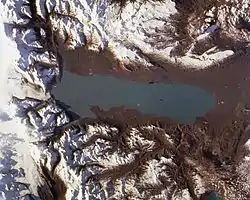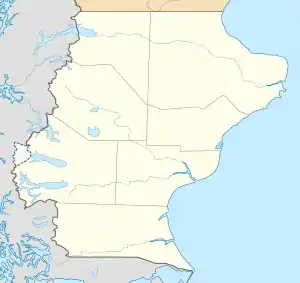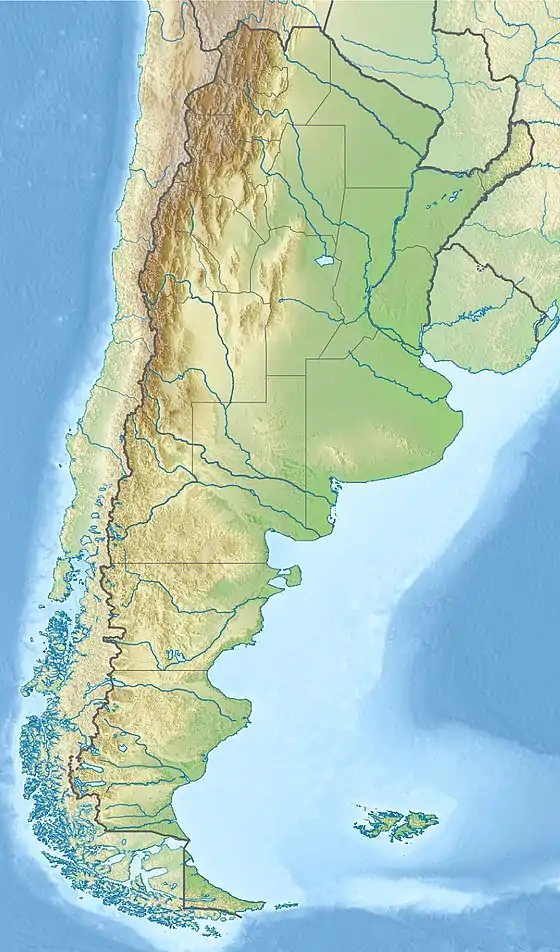Viedma Lake
Viedma Lake (Spanish: Lago Viedma, Spanish pronunciation: [laɣo ˈβjeðma]), approximately 50 miles (80 kilometers) long in southern Patagonia near the border between Chile and Argentina. It's a major elongated trough lake formed from melting glacial ice. Viedma Lake is the second largest lake in Argentina.[1]
.jpg.webp)
| Viedma Lake | |
|---|---|
 from space, October 1994 | |
 Viedma Lake  Viedma Lake  Viedma Lake | |
| Location | Lago Argentino Department, Santa Cruz Province (Argentina) |
| Coordinates | 49°35′S 72°30′W |
| Type | periglacial lake |
| Native name | Lago Viedma (Spanish) |
| Primary outflows | Santa Cruz River |
| Basin countries | Argentina |
| Max. length | 80 km (50 mi) |
| Max. width | 15 km (9.3 mi) |
| Surface area | ca. 1,088 km2 (420 sq mi) |
| Surface elevation | 250 m (820 ft) |
The name of the lake comes from the Spanish explorer Antonio de Viedma, who in 1783 reached its shores, being the first European to do so.
The town of El Chaltén and the Andes peaks Cerro Torre and Fitz-Roy lie in the proximity of Lake Viedma.
Lake Viedma is fed primarily by the Viedma Glacier at its western end. The Viedma Glacier measures 3 miles (5 kilometers) wide at its terminus at Lake Viedma. The brown landscape is a result of ice scouring, which left virtually no vegetation on the steep-walled valleys.
Water from lake Viedma flows into Lake Argentino through the La Leona River, and eventually from there into the Atlantic Ocean through the Santa Cruz River.
Although the lake lies in Argentine territory, the western shores of the lake reach the Southern Patagonian Ice Field in an area where the border remains undefined.
See also
References
- "Principal Lagos de la Republica Argentina", http://www.ign.gob.ar/NuestrasActividades/Geografia/DatosArgentina/Lagos, accessed 20 Jul 2018